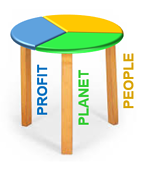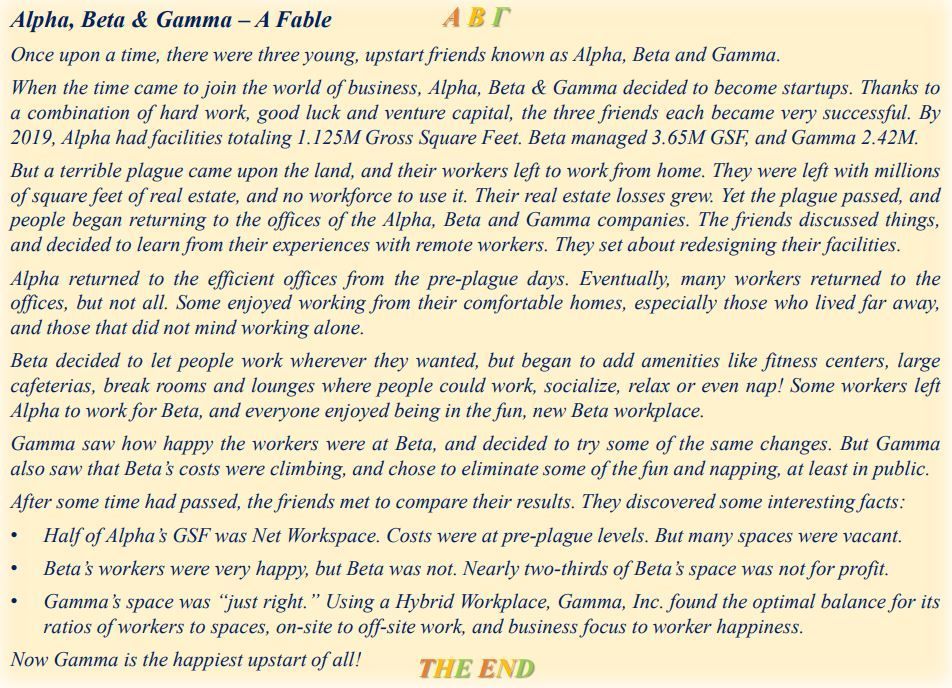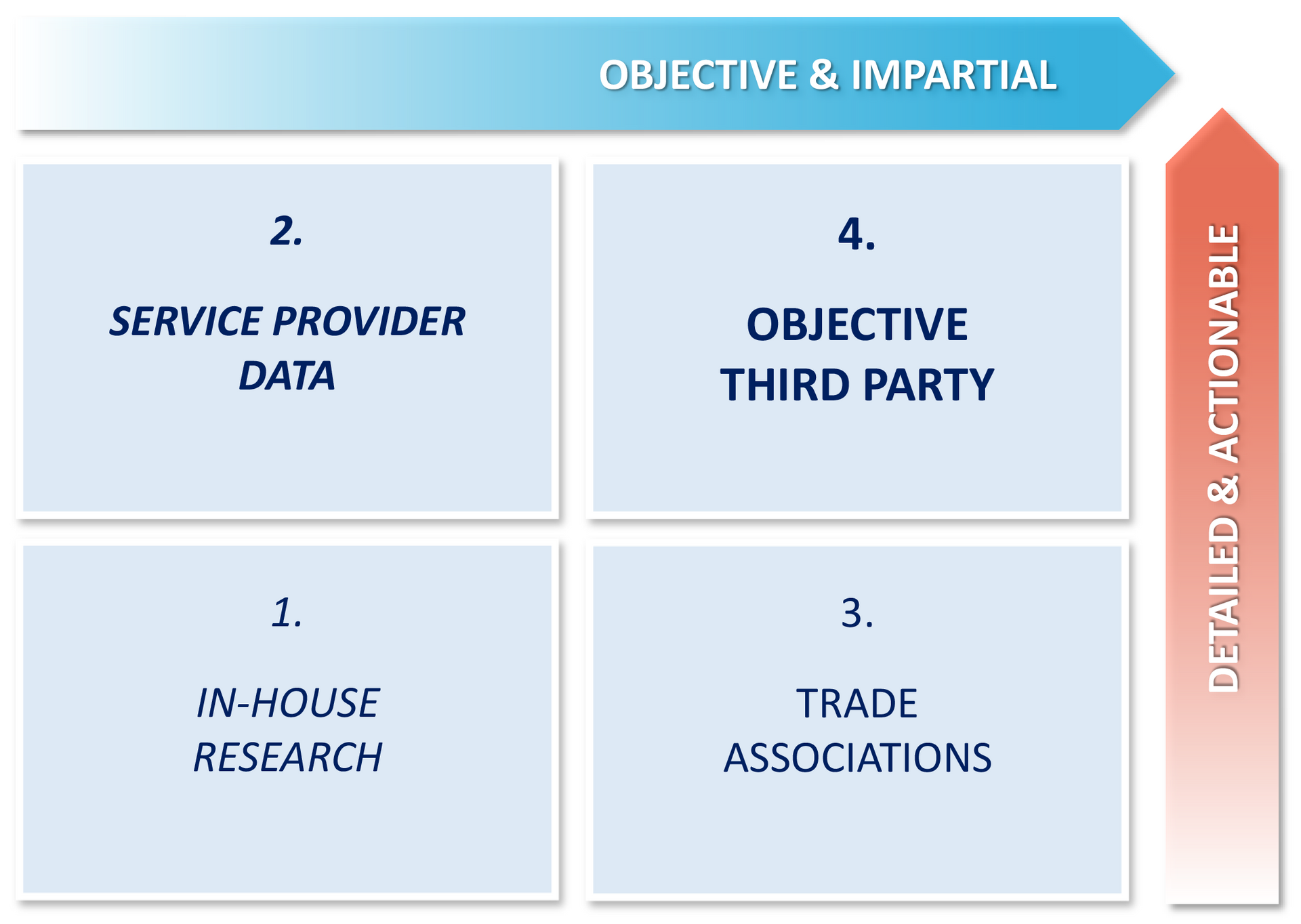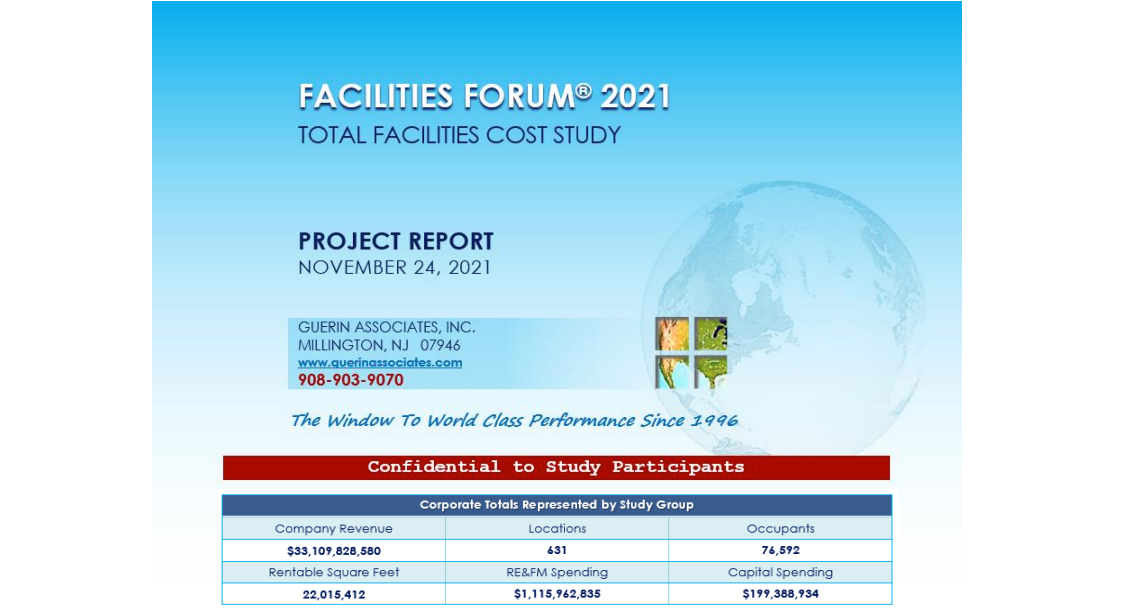Hi-Perf Bldgs – Level 1: Program Balance
The Seven Levels of Excellence provide a clear framework to help owners, designers and managers optimize cost-effectiveness, sustainability, and wellness over the facility life cycle.
This material is intended for individuals in real estate, facilities design, and management. Please feel free to use this material internally and/or forward it to any colleagues with a professional interest. Prior written permission from Guerin Associates is required for commercial use.

HPB - Level 1: "PROGRAM BALANCE"
Program Balance involves three values, often described as the Triple Bottom Line. Like a three-legged stool, each element is essential to an effective, well-rounded operation. it's also very important to determine management's relative importance for the three major priorities:
- People - High-quality space, HVAC, air, lighting, services, etc.
- Planet - Environmentally sustainable sites, buildings, services
- Profit - Schedules, construction & operating budget controls, etc.
A well-balanced Triple Bottom Line (“TBL”) can produce substantial benefits, but balancing different types of priorities can be difficult. Benefits vary in nature, and are not "fungible," or interchangeable.
In addition to relative importance, it is important to verify that required levels of funding and decision support will actually be available to accomplish the stated company objectives.
People - Benefits to Occupants
- Improvements
- Indoor environmental quality
- Water and interior materials quality
- Heating, ventilation and air conditioning
- Site design for walking, biking, etc.
- Health, wellness & productivity
- Reductions
- Hazardous substances
- Workplace-induced errors
- Stress, illness and absenteeism
B. Planet - Environmental Benefits
- Improvements
- Ambient air quality
- Water conservation
- Waste management
- Natural and local resources
- Transportation and site access
- Reductions
- Energy use and carbon footprint
- Traffic congestion and emissions
- Rainwater runoff and erosion
- Food and materials waste
- Environmental damage
C. Profit - Economic Benefits
"Profit" usually refers to the increased asset value and reduced operating costs of sustainable facilities. These are only part of the bigger picture, which is improved in stages like these:

High Efficiency Design reduces energy use and carbon emissions before occupancy. It eliminates a large portion of the Embodied Energy required to extract, manufacture, deliver and install building materials. This greatly reduces the overall financial and environmental costs of building.
Example: Structural steel is just one of many components in modern buildings.
- Impact per Cubic Foot (Cradle to Gate only)
- Material Density 7,800 kg/m3
- Embodied Energy 21.5 MJ/kg
- CO2 equivalent 1.42 kgCO2e/kg
The steel alone for a 100K SF building can embody 500+ tons of CO2e before it's built.
Conclusions
1. High-Performance Buildings are realized by:
- Adopting a balanced perspective
- Acquiring an accurate “big picture”
- Articulating clear goals early in the design
2. High-Efficiency Design addresses gaps and drives improvements.
Stage 1: Improve Economics
These benefits cannot be combined, or measured in "apples to apples" units. Suppose the Triple Bottom Line were a three-legged stool, and we wanted the environmental and financial benefits to balance those being provided to the building's occupants. How would we accomplish this?
Fortunately, there is a clear, simple way to analyze the environmental and financial benefits of an effective building design. We call this methodology "High Efficiency Design.
"High Efficiency Design is an important but often unrecognized solution. The concept is simple: Reduce a building’s footprint and you improve Asset Utilization, Return on Assets, Return on Capital, and the Opportunity Costs for each square foot of excess space, which are substantial.
- Project Assumptions
- Construction Cost (say) $150 / SF
- Nominal Building Life 40 years
- Investment Projections
- Internal Rate of Return (say) 12% $12,462
- Real Estate Appreciation (say) 5% $1,006
- Lifecycle Opportunity Cost $11,456 per SF
A 100K SF building design improved by only 5% can enhance results by over $50M.
Stage 2: Expand Environmental Gains
The environmental impact of overdesign is both significant and long-term. A balanced approach addresses the building life cycle from its genesis, not just its operational phase (“C. SITE”).












